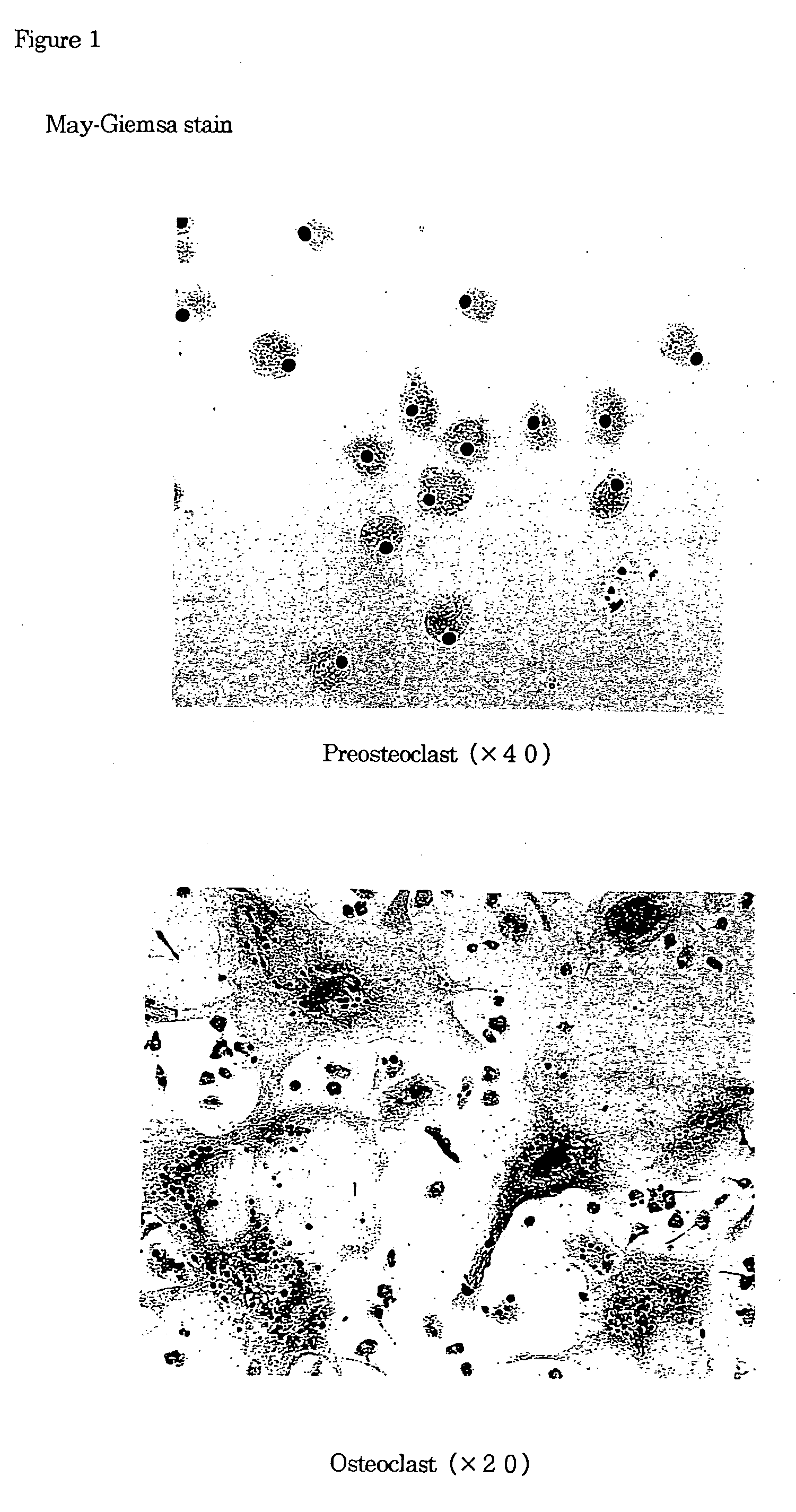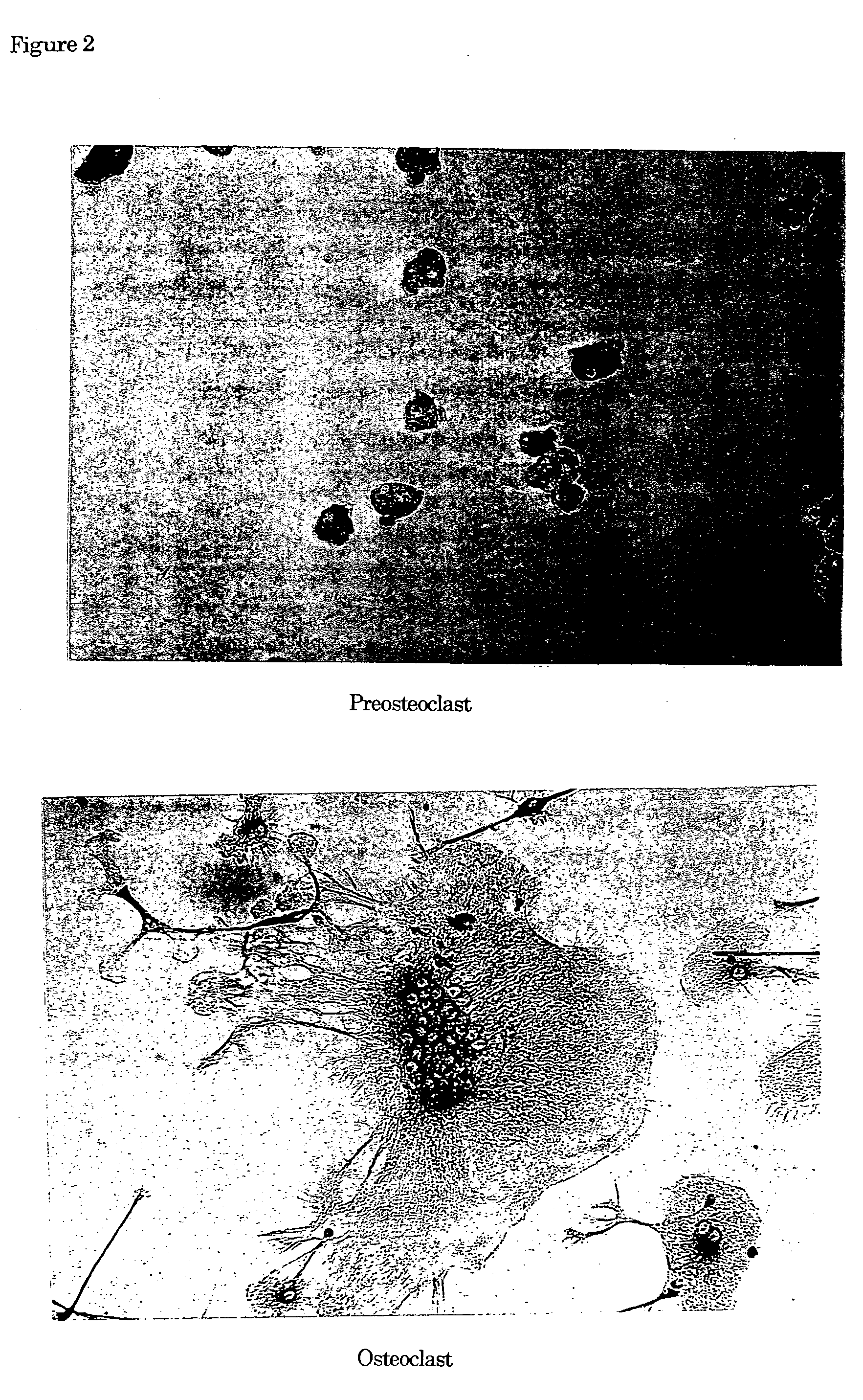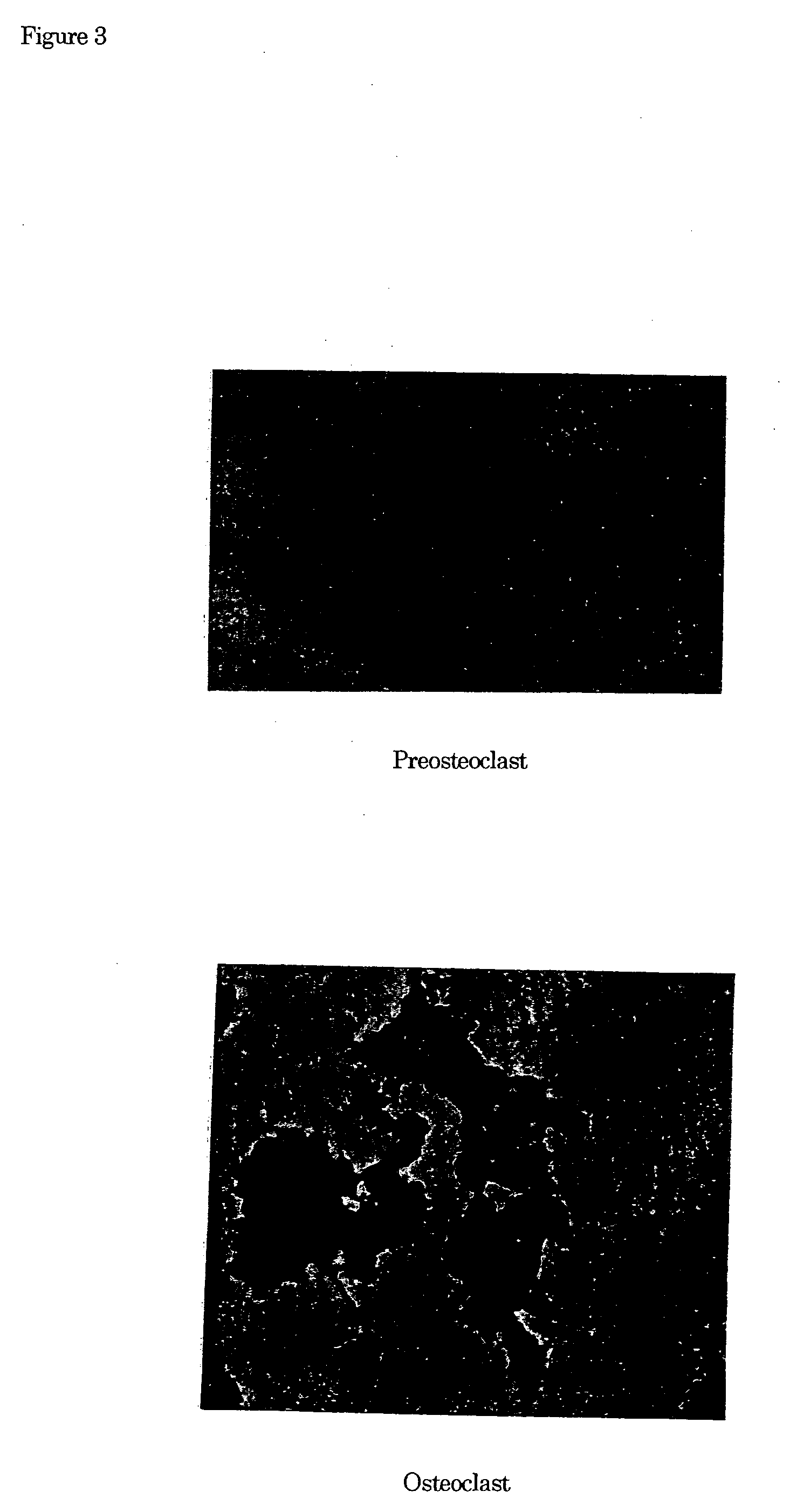Methods for isolation of osteoclast precursor cells and inducing their differentiation into osteoclasts
a precursor cell and osteoclast technology, applied in cell culture active agents, artificial cell constructs, drug compositions, etc., can solve the problems of inability to isolate osteoclasts, unbalance between bone resorption and generation, etc., to achieve the effect of reducing bone mass and easy screening for bone metabolic diseases
- Summary
- Abstract
- Description
- Claims
- Application Information
AI Technical Summary
Benefits of technology
Problems solved by technology
Method used
Image
Examples
example
Example 1
Isolation of Human Osteoclasts from Joint Fluid of Patients with Rheumatoid Arthritis
[0059] (1) Separation of a Cellular Fraction
[0060] Joint fluids were obtained from patients with rheumatoid arthritis. The joint fluids were kept in tubes at 4° C. The following procedures were generally under sterile conditions. The joint fluid, 1 ml to several tens ml, was added to equal volume of RPMI 1640 medium (Gibco BRL, #22400 or equivalent). The mixture was centrifugated at 1,000-2,000 rpm for 5 minutes at 4° C. to obtain a cellular fraction containing granulocytes and lymphocytes.
[0061] (2) Isolation of Preosteoclasts
[0062] The obtained cellular fraction was cultured in DMEM medium (Gibco BRL, #12430-21 or equivalent) supplemented with 10% (v / v) of fetal calf serum (FCS) in 5-7% CO2-containing air at 37° C. for several weeks. During the culture period, all cells except preosteoclasts died out, and only preosteoclasts survived (FIGS. 1, 2).
[0063] (3) Preparation of Medium
[00...
example 2
Isolation of Human Osteoclasts from Peripheral Blood of Healty Donors
[0092] (1) Separation of Cellular Fraction
[0093] Fifty ml to 200 ml of peripheral blood of healthy donors were collected in the presence of heparin or an alternative anticoagulant. Peripheral blood mononuclear cells (PBMC) were obtained by a specific gravity centrifugation using a Ficoll-paque (Pharmacia Biotech). 107 cell / ml of PBMC were suspended in RPMI1640 medium containing 10% (v / v) FCS, then 1-1.5 ml / dish of the cell suspension was cultured on 60 mm culture dish at 37° C., in 5-7% CO2-containing air, for 1-2 hours. After the culture, the non-adherent cells were rinsed out from the dish with RPIM1640 medium containing 10% (v / v) of FCS at 37° C. Adherent cells to the dish were washed with cold (4° C.), serum-free RPIM1640 medium, then the cells were collected as a peripheral blood monocytes (about 3-8% of total PBMC).
[0094] (2) Isolation of Preosteoclasts
[0095] The obtained monocytes (0.5−1×106 / ml) was cult...
PUM
| Property | Measurement | Unit |
|---|---|---|
| temperature | aaaaa | aaaaa |
| volume | aaaaa | aaaaa |
| volume | aaaaa | aaaaa |
Abstract
Description
Claims
Application Information
 Login to View More
Login to View More - R&D
- Intellectual Property
- Life Sciences
- Materials
- Tech Scout
- Unparalleled Data Quality
- Higher Quality Content
- 60% Fewer Hallucinations
Browse by: Latest US Patents, China's latest patents, Technical Efficacy Thesaurus, Application Domain, Technology Topic, Popular Technical Reports.
© 2025 PatSnap. All rights reserved.Legal|Privacy policy|Modern Slavery Act Transparency Statement|Sitemap|About US| Contact US: help@patsnap.com



